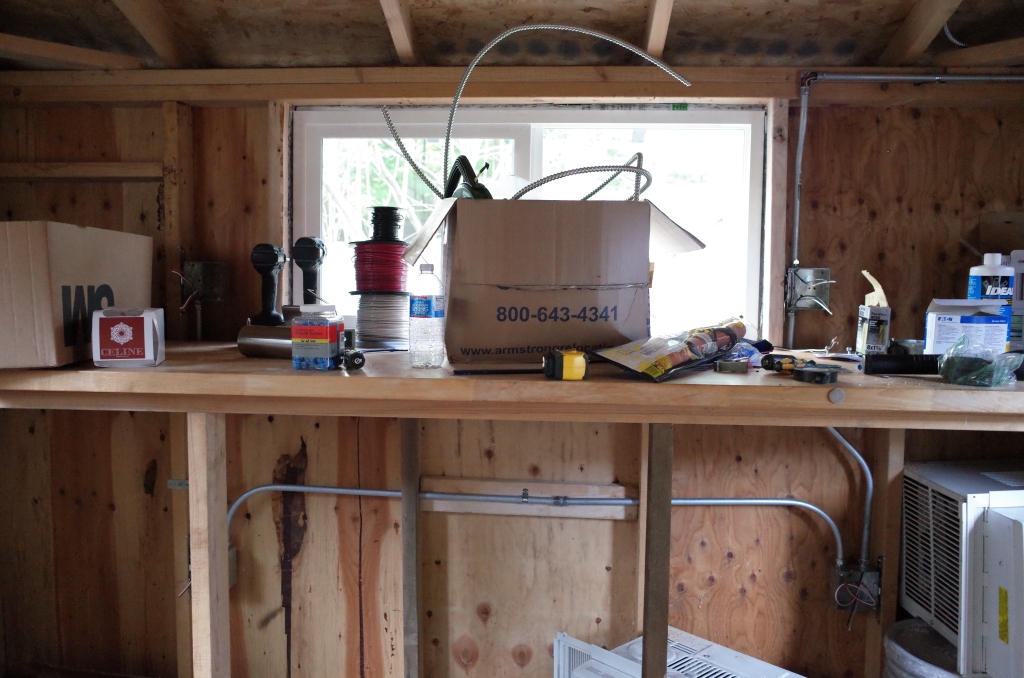I alluded to the fact in the last two posts that there are some laws and regulations applicable to electrical work.
Among other things, your city or state will require you to obtain a permit (and pay a fee) before you can even begin the work. In Washington state, this is the Department of Labor & Industries. The work needs to be done in accordance with certain requirements, and then an inspection is required once it’s complete. At that point, you notify the Department and schedule a date, and an electrical inspector will come on site to review all of the work.
It’s not uncommon to fail an inspection and for remedial action to be required. An inspector can fail you no matter how small the violation, relative to the overall work done.
Judge not, lest ye be judged – amirite? Unfortunately, it’s literally the inspector’s job to judge – and he or she has significant power and discretion.

What are the requirements governing electrical work? There are several, and they are no joke. I had to bring myself up to speed quickly.
First, there’s the National Electrical Code (“NEC”), which is published by the National Fire Protection Association (“NFPA”), in NFPA 70. Interestingly, this is the same NFPA that publishes the Code for High Power Rocketry (“HPR”), in NFPA 1127. But that’s a whole separate topic, worthy of its own blog post.
The NEC is “national” but is not technically a federal law. However, it has been adopted in all 50 states, which can also modify it as they see fit – so the rules can and do slightly vary from one region to another.
In Washington, there are state-specific statutes and regulations further modifying the standard NEC rules.

So what are these rules, exactly? There are far too many for a comprehensive list, but here are a few examples:
- Conduit minimum depth underground. Copper wire must generally be enclosed inside conduit (metal/rigid or PVC) and, if horizontal and running across the ground, must be buried so the top of the conduit is at least 18″ underground.
- Securing conduit. Conduit that is vertical and runs along walls (indoor or outdoor) must be secured with straps (plastic or metal) at no greater than 36″ intervals.
- Conduit bends. You can physically bend conduit – with heat, if it’s PVC, for example – or you can attach 90 degree (or 45 degree) PVC “elbows” for turns. But the total turns cannot exceed 360 degrees. That means, for example, you could have a maximum of four 90 degree “elbows” or PVC pipe bends.
- Panel clearance. Installation of a new electrical panel or sub-panel must have a certain minimum amount of clearance in front of it. Specifically, a minimum width of 30″, depth of 36″, and height of 60″. Visualize a telephone booth-like invisible box in front of the panel that must be completely unobstructed to ensure access to the panel.
- Tamper-proof outlets. Electrical outlets (or “receptacles”) inside a dwelling unit (e.g. a house) must be tamper-proof. Inside a shed, which is not a dwelling unit, they don’t need to be – until the 2020 version of the NEC takes effect this summer, at which point even the shed would need all outlets to be tamper-proof.
- GFCI outlets. For safety reasons, a ground fault circuit interrupter (“GFCI”) is required. Either the electrical panel needs to have a GFCI circuit breaker, or at least one outlet needs to be a GFCI outlet.
- Ground rods. The new electrical panel for the shed requires at least one copper ground rod, and depending on the soil quality (specifically, its electrical resistance), possibly requires two. A ground rod comes in a standard length of 8 feet and has to be driven completely down into the ground. A bare copper wire (not insulated or inside conduit) connects the ground rod to the electrical panel. This is again for safety reasons, to redirect excess current.

The NEC and its state and local variations of the electrical code have many more rules that must be followed. The above list is just a small fraction of things I learned during the course of this project – all from my friend Darrin, noted electrical expert and lifelong student of the electrical code, among other titles.
Again, the reasons for these rules are often pretty self-explanatory. Clearance in front of a panel is important so that a person has unobstructed access to the panel. Copper wire should be inside conduit when buried, in order to protect it from future damage – and that conduit should be buried pretty deep, for the same reason. The rules are mostly about safety and common sense.
As soon as we completed all the work, I scheduled the inspection. This was on a Sunday afternoon, incidentally, and the inspector showed up first thing Monday morning – record response time.
Judgment day!
The inspector was friendly, and he seemed quite impressed with all the work and how thoroughly it was done. He agreed it met all the applicable requirements in the code, with just a couple of very minor issues to address. These were promptly fixed, and the project officially passed inspection.
All I need to do now is a bit of final cleanup work – fill in that huge trench; clean up the mess everywhere from sawing, drilling; get the landscaping back in order with about a hundred wheelbarrows of mulch; and so on.
I think at this point, the backyard garden shed can officially and rightfully be called a workshop.



























